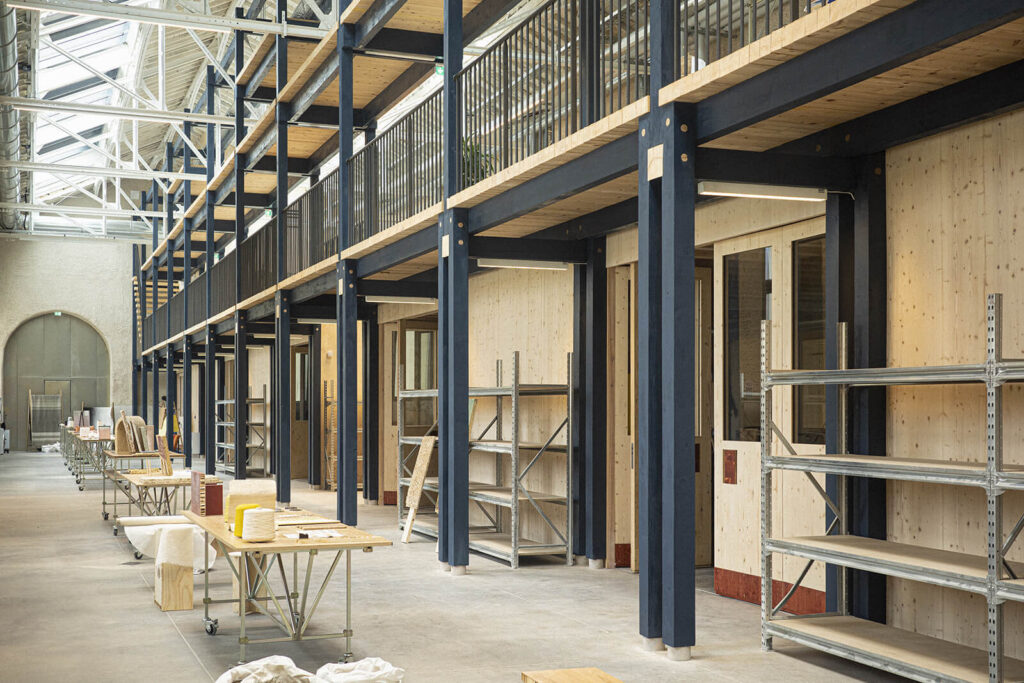
Industrial spaces, such as factories and warehouses, often conjure images of utilitarian functionality rather than aesthetic appeal. However, in today’s competitive business environment, the appearance of these spaces plays a crucial role in attracting customers, improving employee morale, and enhancing overall productivity. In this article, we will explore the transformative power of redesigning and revamping industrial spaces, focusing on how strategic changes can breathe new life into these often overlooked environments.
Understanding the Importance of Industrial Space Design
Traditionally, industrial spaces have been designed with a primary focus on efficiency and practicality. While functionality remains paramount, there is a growing recognition of the impact that the physical environment can have on workforce satisfaction, brand image, and operational efficiency. By reimagining industrial spaces as more than just places of work, businesses can create environments that inspire creativity, foster collaboration, and promote well-being among employees.
Key Considerations for Transformation

When embarking on a journey to transform an industrial space, several key considerations must be taken into account:
- Purpose and Functionality: Before making any design decisions, it is essential to clearly define the purpose and functionality of the space. Whether it is a manufacturing facility, distribution center, or storage warehouse, understanding the specific requirements of the operation will inform the design process and ensure that the final result meets the needs of the business.
- Brand Identity: Industrial spaces offer a unique opportunity to showcase a company’s brand identity and values. From the color scheme and signage to the layout and materials used, every aspect of the design should reflect the brand’s personality and message. By aligning the aesthetics of the space with the company’s brand identity, businesses can create a cohesive and memorable experience for employees, clients, and visitors alike.
- Flexibility and Adaptability: In today’s dynamic business landscape, the ability to adapt to changing needs and circumstances is more important than ever. When designing industrial spaces, it is crucial to incorporate elements that allow for flexibility and scalability. This could involve modular furniture, movable partitions, or versatile storage solutions that can easily be reconfigured as needed. By creating spaces that can evolve with the business, companies can future-proof their investments and ensure long-term success.
- Employee Well-being: A focus on employee well-being is a fundamental aspect of any successful industrial space design. Providing ample natural light, comfortable break areas, and ergonomic workstations can significantly improve employee morale, productivity, and satisfaction. Additionally, incorporating elements of biophilic design, such as indoor plants and greenery, can create a connection to nature and enhance overall mental and physical health.
Transformative Design Strategies
With these considerations in mind, let us explore some transformative design strategies that can help breathe new life into industrial spaces:

- Creative Use of Color: One of the most impactful ways to transform an industrial space is through the use of color. By incorporating bold accent colors or creating feature walls, businesses can inject personality and visual interest into an otherwise drab environment. Additionally, strategic use of color can help delineate different areas of the space, improve wayfinding, and create a sense of cohesion throughout the facility.
- Upcycling and Repurposing: Instead of discarding old or outdated materials, consider repurposing them in creative ways to add character and charm to the space. For example, reclaimed wood can be used to create custom furniture or accent walls, while salvaged industrial fixtures can be repainted and repurposed as decorative elements. Not only does upcycling reduce waste and environmental impact, but it also adds a unique and rustic touch to the space.
- Embrace Industrial Chic: Embracing the raw, unfinished aesthetic of industrial architecture can create a modern and edgy vibe that is both on-trend and timeless. Exposed brick walls, concrete floors, and metal beams can serve as striking architectural features that celebrate the building’s industrial heritage. By juxtaposing these industrial elements with sleek and contemporary furnishings, businesses can achieve a sophisticated yet rugged aesthetic that is sure to impress.
- Incorporate Technology: Integrating cutting-edge technology into industrial spaces can enhance efficiency, streamline operations, and improve the overall user experience. Whether it is state-of-the-art automation systems, interactive digital displays, or IoT-enabled sensors, technology can play a crucial role in transforming industrial spaces into smart, connected environments. By embracing innovation and embracing the digital revolution, businesses can future-proof their industrial spaces and stay ahead of the curve.
In conclusion, the transformation of industrial spaces represents an exciting opportunity for businesses to redefine the way they work, collaborate, and innovate. By taking a holistic approach to design and considering the needs of both employees and the business, companies can create industrial environments that are not only functional and efficient but also inspiring and aesthetically pleasing. Whether through creative use of color, upcycling of materials, or integration of technology, the possibilities for transforming industrial spaces are endless. With the right vision, strategy, and execution, businesses can breathe new life into their factories and warehouses, setting the stage for success in the modern era.
